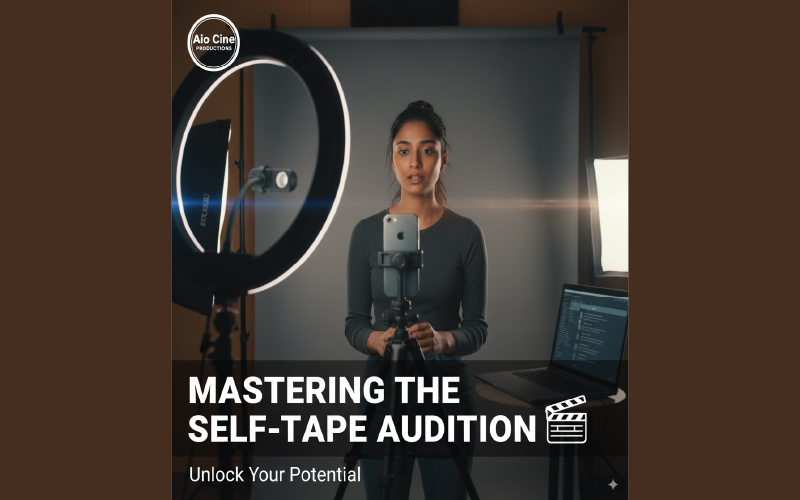Mastering the Self-Tape Audition

The self-tape audition is no longer just an option it's the industry standard.
Step 1: The Foundation – Your Audition Prep Checklist
Before you even think about hitting record, the deep work of an actor begins. A winning self-tape is built on a foundation of detailed preparation.
- Define Your Objectives to Drive the Scene: As the great Ivana Chubbuck teaches, your character is driven by a primal need to win. Your Overall Objective is their ultimate goal. The Scene Objective is what they are fighting for right now. Make it active and personal. Uta Hagen would insist you substitute the character's goal with a deeply personal one from your own life to create authentic, high stakes.
- Build Your World with Specific Circumstances: A scene doesn't exist in a vacuum. Stella Adler championed the power of imagination to build the given circumstances. Where are you? What time is it? What just happened? These details inform everything. Identify your character's Obstacles—the things standing in their way—and make them formidable.
- Create a Powerful "Moment Before": Your scene must start with urgency. Michael Shurtleff, in his essential "12 Guideposts," stressed the Moment Before. Craft a specific event that propels your character into the scene, ensuring you start at a pinnacle of energy and need.
- Play Actions, Not Emotions: A common mistake is trying to "play sad" or "play angry." Drawing from the practical techniques taught by Melissa Bruder, you must break the script into Beats (shifts in intention) and assign a playable Action to each one. Actions are what you do to the other person: "to plead for help," "to expose a lie," "to twist the knife." This focus on doing, not feeling, is how you deliver a truthful performance.
- Trust Your Prep and Let Go: After your meticulous work, the final step is to trust it. Once the camera is rolling, you must listen and respond in the moment. Great actors like Bryan Cranston do immense preparation so they can be completely free and spontaneous during the take.
Step 2: How to Make Bold Choices That Impress Casting Directors
Casting directors watch hundreds of self-tape auditions. The ones that stand out are authentic and brave.
- Avoid "Paper-Pleasing" at All Costs: Don't deliver the performance you think they want. That neediness is transparent and uninteresting. Your unique personality and life experience are your greatest assets. As Jenna Fischer champions in her advice to actors, you are the secret ingredient that brings a character to life.
- Take Risks in Your Performance: Safe choices are forgettable. A choice that feels a little scary is often the most compelling one. Find the contradictions in the character, the humor in the drama, the love in the conflict. A bold, unexpected choice is what makes a casting director sit up and take notice.
Step 3: Your At-Home Audition Setup – Technical Quality is Key
Your brilliant acting deserves to be seen and heard without distraction. A professional self-tape requires solid technical quality.
- Lighting for Self-Tapes: Your face must be clearly and evenly lit. You don't need expensive equipment; a simple ring light or a two-softbox light kit from Amazon can make a world of difference. Avoid filming in front of a bright window, as it will turn you into a silhouette.
- Crystal-Clear Audio: Poor sound can make your audition seem amateur. Record in a quiet room and consider an inexpensive lavalier or shotgun mic that plugs into your phone or camera. Do a test run to check for echoes or background noise.
- The Perfect Background: Choose a simple, clutter-free background. A solid-colored wall (gray or blue works best) is ideal. The focus should be entirely on your performance, not the poster on your wall.
Step 4: Practice Your Audition Technique Like a Pro
Auditioning is a skill that must be honed. As the legendary Sanford Meisner taught, repetition is the mother of skill.
- The Importance of a Good Reader: Your reader is your scene partner. Their performance directly affects yours. Ask another actor to read for you. The core of the Meisner technique is to get your focus off yourself and onto your partner, allowing you to react truthfully in the moment.
- Don't Stop for Mistakes: If you flub a line or your dog barks, keep going. Use the interruption. Some of the most authentic human moments come from these happy accidents. Professional actors know how to stay in the scene until they hear "cut."
Step 5: Logistics – Submitting Your Self-Tape Audition
Your job isn't over until the file is successfully submitted. As acting business guru Brian O'Neil would say, professionalism matters.
- Know Your Tech: Have your self-tape audition setup ready to go at a moment's notice. Casting windows can be short, so you need to be able to film, edit, and upload quickly and without stress.
- Follow Submission Instructions: Pay close attention to how casting wants the file labeled, how they want you to slate, and the deadline. Upload your self-tape and demo reel to casting platforms like Actors Access and ensure your profiles are complete and up-to-date.
By combining the profound wisdom of the masters with these practical steps, you can turn the self-tape audition from a chore into your greatest career opportunity. Do the work, be brave, and show them what only you can do.



Write A Comment
No Comments